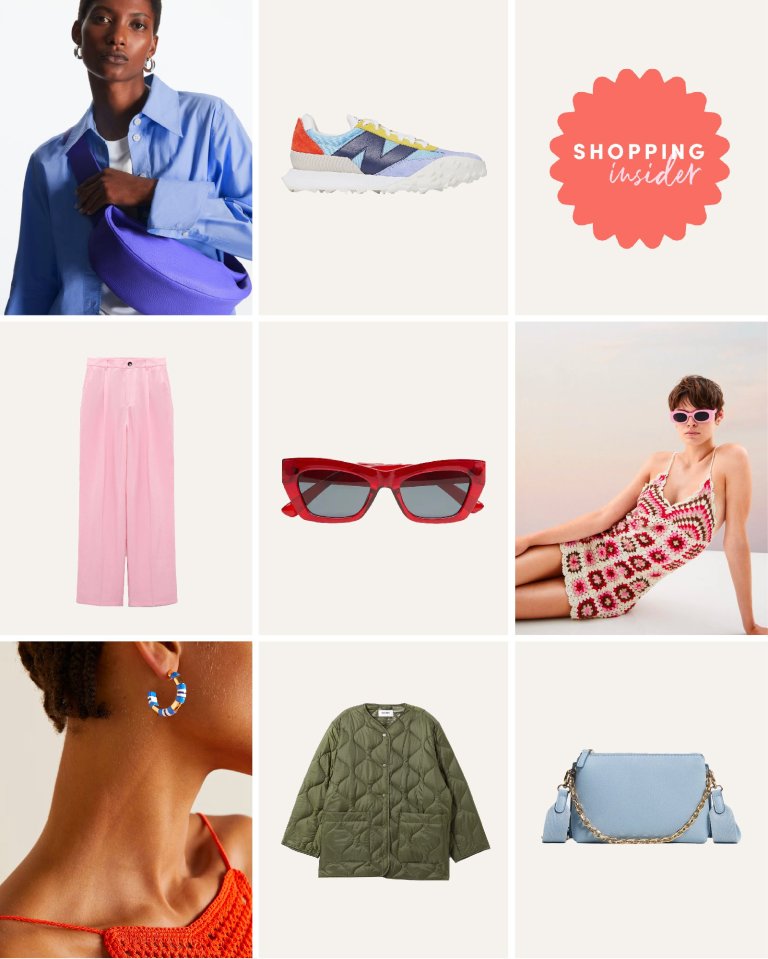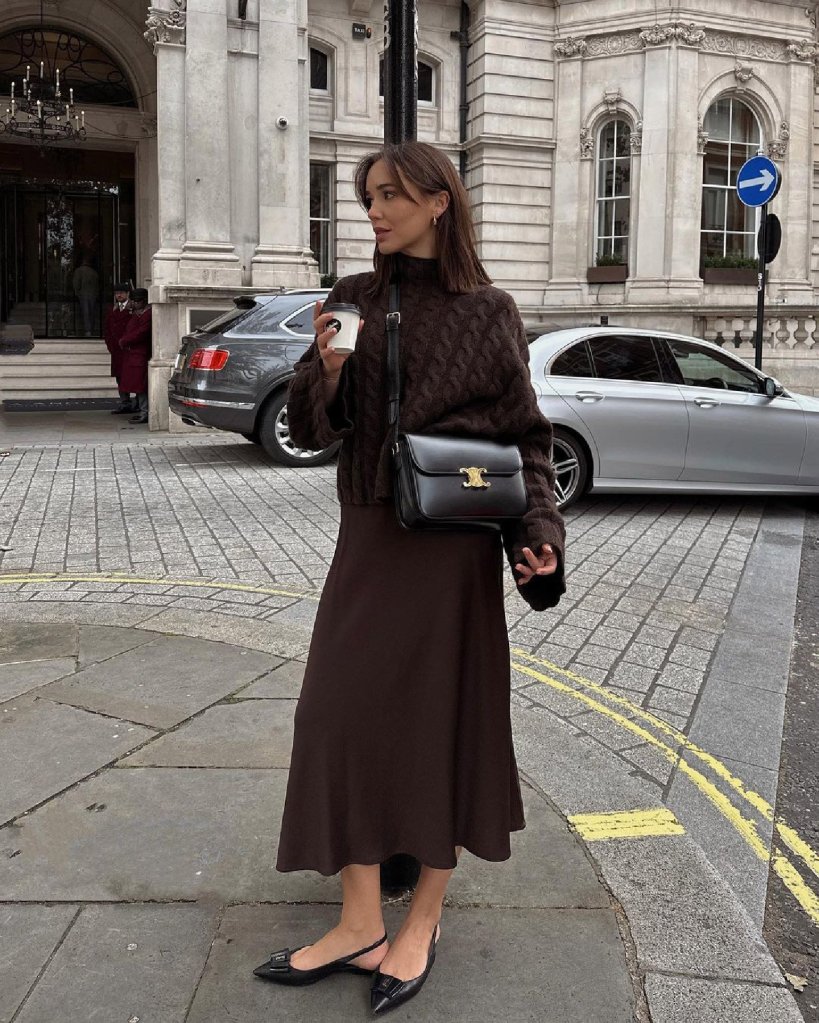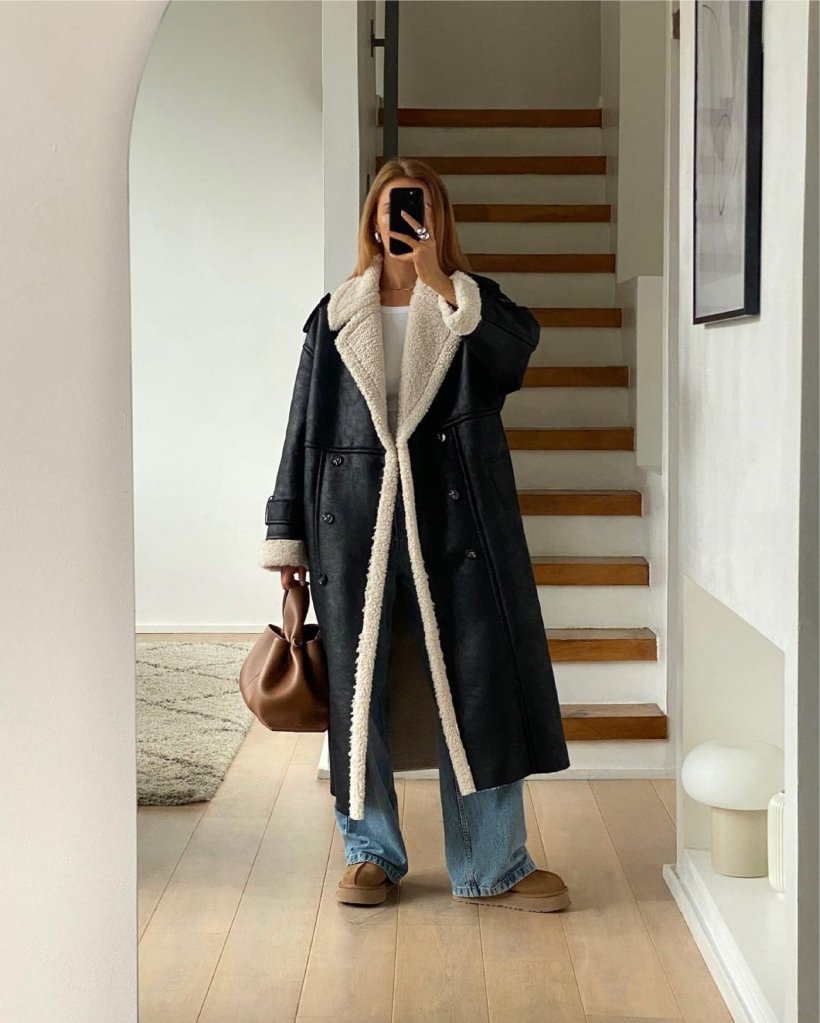Open my wardrobe and you’ll find a sea of black clothing, a healthy dose of navy and a smattering of white. Over the last decade I have fallen hook, line and sinker for creating a ‘classic’, neutral wardrobe that will serve me well for years to come and withstand the comings and goings of the trend cycle. It has done and continues to do all of those things, and I have many years-old pieces that I love and wear regularly. But it’s also a bit boring.
For some reason, as I get older I find myself drawn towards colour but paralysed by an odd fear when it comes to actually investing in it. Perhaps it’s because I prefer to blend in (I always have), and brighter colours make you stand out. Perhaps it’s because I’ve spent a decade writing about the attributes of a neutral, timeless wardrobe and in doing so have unwittingly indoctrinated myself into only buying clothes that fit the bill.
I’m not sure, but I do know that I would like to wear more colour. So, like any good overthinker, I’ve really put the time into working out how to wear colour and how to do it well – and now I’d like to share my tips with you…
Find out which colours suit you
The first step on your journey to a newly-colourful wardrobe is to establish which colours suit you. It may sound odd but not every colour suits every person – and wearing the ‘wrong’ colours has the potential to put you off trying out how to wear colour altogether.
Before we start though, it’s worth noting that this isn’t a rule, simply a guide: if there is a colour you love wearing that doesn’t or shouldn’t traditionally suit you – wear it! As with everything in style, the most important thing is how your clothes make you feel.
First up, it helps to work out the undertone of your skin. This references the underlying colour of your skin – the hue that ‘shines through’ your skin – and traditionally falls into one of three categories: warm, cool or neutral. If you have ever used a foundation-matching service, you may well already know what yours is. If not, there are a number of ways to work it out – and they apply to every skin colour, from the lightest to the darkest.
How do I work out which colours suit me?
1. The paper test
Finding out your undertone can be as simple as holding a sheet of white paper up to your neck – not your face, as our faces can sometimes appear reddened by various skin issues. Make sure you’re in good natural light when you do this. If your skin appears yellowish against the paper, you likely have a warm undertone. If it appears pinkish or rosy, you’re cool. If you don’t see any noticeable undertone, or your skin appears greyish, you’re neutral.
2. Check out your veins
Another way is to look at the colour of your veins. Find where your veins are most noticeable – the inside of your wrist is usually the best place. If your veins appear blue or purple in colour, you probably have a cool undertone. If they appear more green, you’re warm. If you can see both colours, you’re likely neutral.
3. What colour jewellery suits you
You probably already know what colour jewellery suits you best, and it can be a simple indicator of your skin’s undertone. If you’re not sure, grab some gold jewellery and silver pieces and try them both out. If gold complements you best, you have a warm undertone, if it’s silver, then you have a cool undertone. If neither looks better than the other, you can bet you’re neutral.
Now that you’ve established your undertone, it should be easier to find out which colours will work best for you, and help to make shopping for colour a little less overwhelming…
Warm: You guessed it, you’re looking for warmer colours – orange, amber, golden yellow, warm reds, coral pinks, magenta. Earthy tones, if you will. But it doesn’t mean you can’t go for traditionally cooler colours too – like blues and greens – just opt for the warmest versions of them, such as olive green and deep turquoise. Neon colours will also work for you, but avoid really cool colours like ice blue, and jewel tones, which could make your skin look greyish.
Cool: Yep, you want traditionally cooler colours. If warm nods to earthy colours, then cool nods to water colours. Bright blues, emerald green and deep purple – jewel tones in general work well for cool tones – as well as pastels like lilac, lavender, mint green and rosey pinks. Avoid orange, tomato red and strong yellows as these can wash you out.
Neutral: The joy of a neutral skin tone is that it is complemented by any colour, though generally it’s recommended that you opt for muted shades over brighter ones.
Again, this is a guide not a rulebook and sometimes the guidelines don’t ring true for everyone, for various reasons. Sometimes the best method is simply trial and error, heading to the shops and trying on a ton of stuff to see which colours you feel and look best in.
Get to know the colour wheel
You’ve put in the groundwork, so what’s the next step? Meet the colour wheel. This round rainbow will be your best friend when it comes to getting more colourful.
Put simply, the colour wheel is a tool used in art and design to illustrate the relationship between colours, and to inform something called colour theory. In relation to styling, it helps us to work out how to team colours harmoniously.
Colour theory is a vast topic but there are three main takeaways that are incredibly useful for how to wear colour, read on to find out more – but first, head to Google and save a version of the colour wheel so that you can refer to it when you’re shopping (tip: opt for one that shows hue, tint, tone and shade for each colour)…
Analogous colours: These are the three colours that sit beside one another on the colour wheel, thus sitting harmoniously with one another when worn together. This can be used to inform an outfit consisting of three colours, or simply to find one colour that suits another – for example, you’ve bought a new green blouse and want to know what colour trousers to pair it with. Find the right shade of green on the colour wheel and see which colours sit directly to its left and right, then select one of those colours as your pairing.
Complementary colours: Love the colour-blocking look but not sure how to put it together? That’s where complementary colours come in. Put simply, these are colours that sit directly opposite one another on the colour wheel, and therefore contrast perfectly with one another – such as red and green, or purple and yellow.
Triadic colours: This refers to three colours evenly spaced on the colour wheel – so if you were to draw an even-sided triangle, each point of the triangle is one of the triadic colours. This creates a colour combination that is balanced and harmonious.
Start small
If, like me, you’ve been steadfastly dedicated to building a neutral wardrobe for most of your adult life, the thought of switching to head-to-toe colour immediately is probably a little too daunting (and expensive). So start small. Accessories are the easiest way to test out new colours and how they make you feel. Whether it’s a pair of trainers, heels, hair clips or a handbag, use an accessory as your gateway piece for how to wear colour.
Stylish colourful accessories to buy now
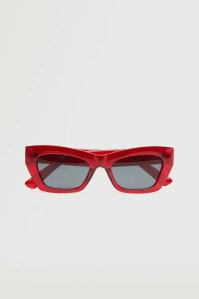
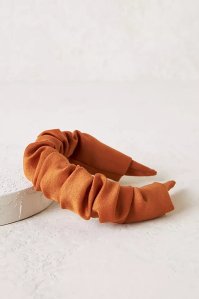

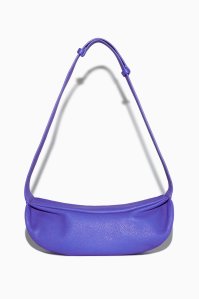
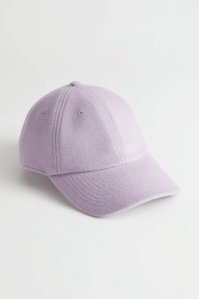

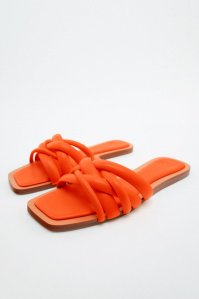
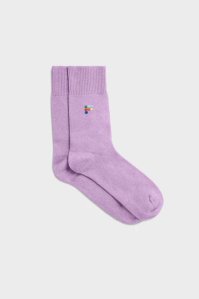
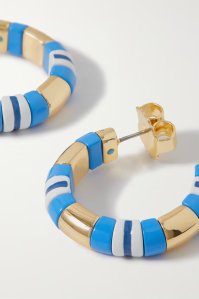
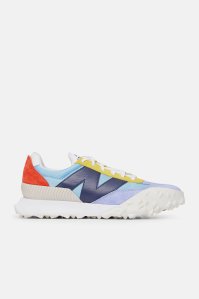
*Eliza may earn commission on sales from these product links
Don’t forget your neutrals
Even if you’re determined to get more colourful, there is still room in your wardrobe for neutrals. In fact, they’re pretty essential. A good base of neutral pieces will make incorporating colour so much easier.
So, what exactly are neutrals? They’re colours that can be paired with pretty much anything – think black, white, grey, navy and beige, the ‘classic’ colours. They’re not attention-grabbing, they gracefully blend in. What constitutes a neutral is different for everyone, and just like brighter colours, not all neutrals suit everyone.
For example, for me, neutrals are navy, black, white and occasionally grey, if it’s the right heather-hued shade. Beige – in any shade – doesn’t suit me, so I never buy it.
Personally, I also consider denim to be a neutral – I tend to stick to the same shade of mid-blue. It’s different for everyone and something you need to consider for yourself.
But a good base of neutrals creates a brilliant backbone to a colourful wardrobe, and they’re most useful when they take the form of ‘wardrobe essentials’ – like plain T-shirts, shirts, trousers or simple knitwear – unfussy pieces that can slot into many outfits.
Chic neutral pieces to buy now:

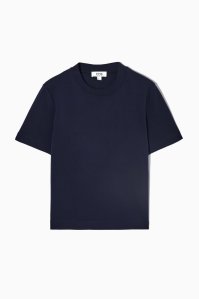



*Eliza may earn commission on sales from these product links
Go tonal
If the previous section detailing the colour wheel left you feeling a little overwhelmed but you’re still keen to dive headfirst into wearing more colour, then tonal dressing – sometimes referred to as monochromatic dressing – may be the technique for you.
It’s simple: dressing head-to-toe in different shades or tones of one colour. It’s an easy way of making colour really work for you, without having to think about it too much. The key to getting it right is to mix your textures, as this creates contrast and depth.
For example, mix a silk or satin shirt with coloured denim, or a wool jumper with a leather skirt. Secondly, use accessories to break it up – if you’re going for a tonal green outfit, try adding a bag or shoes in a complementary contrasting colour.
3 tonal looks to try
The pink edit
Shop the look
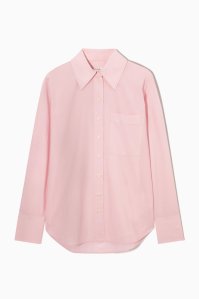

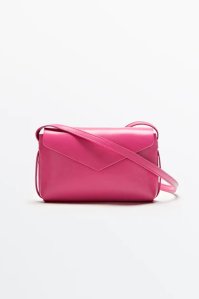
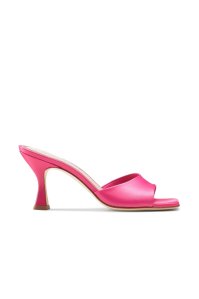
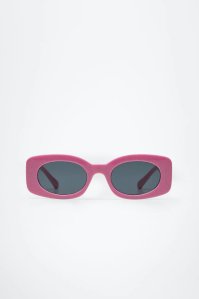
*Eliza may earn commission on sales from these product links
The blue edit
Shop the look
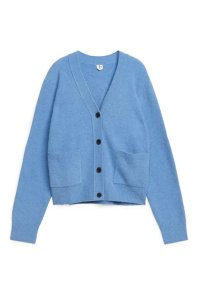
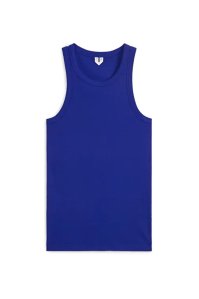
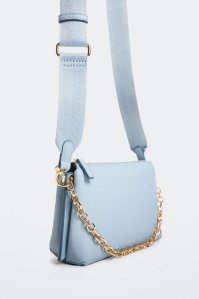
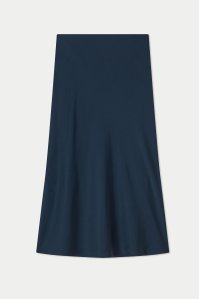

*Eliza may earn commission on sales from these product links
The green edit
Shop the look
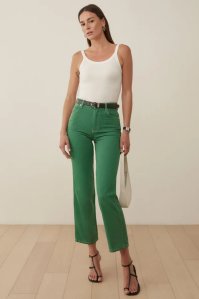
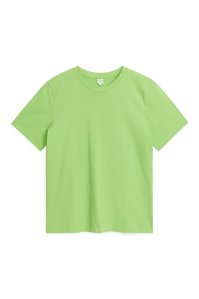
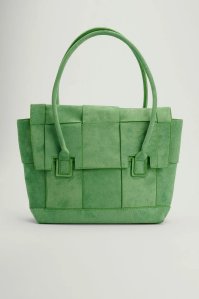
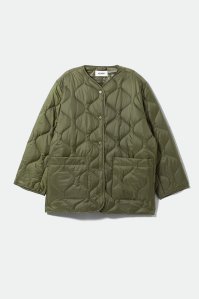
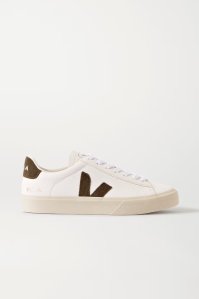
*Eliza may earn commission on sales from these product links
Don’t abandon your personal style
Perhaps the most important thing to bear in mind for how to wear colour is this: don’t forget your personal style. When you’re trying to be more adventurous with your clothing it can be really easy to forget this and buy pieces that fulfil only your new criteria and don’t respect what it is you actually like to wear.
If you’re a Bonafide jeans-and-jumper person, then stick with – look for those pieces in different colours. If you feel best in skirts and dresses, then that is what you need to look for. Ultimately, if you abandon the shapes and styles you like and feel comfortable wearing, nothing is going to work, even if it’s in a ticks-all-the-boxes colour.
